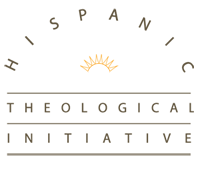Since the early 90’s, Orlando O. Espín has been a prominent figure in the field of Latine (for him, “Latinoax”) Theology. He is the author of foundational scholarly works such as The Faith of the People: Theological Reflections on Popular Catholicism (Orbis Books 1997) and The Wiley-Blackwell Companion to Latino/a Theology (First Edition, Wiley 2015). His training as a systematic and practical theologian demonstrates his lifelong scholarly interest in how popular religion reveals the divine as expressed by/in/from the cultures of those marginalized? For Espín, revelation is a cultural event (Wiley-Blackwell Latino/a, 91). Therefore, not only are popular religious practices conditioned by the cultures with which they entangle but also popular religion is a materialization of marginalized culture itself—in this case, Latine Catholicism is inextricable from Latine culture.
In Pentecost at Tepeyac?: Pneumatologies of the People, Espín uses the history of, and loving bonds seen in, Guadalupan devotion to argue that popular devotion is one of the ways how the Holy Spirit is expressed amongst, and understood by, devotees, especially those with a history of oppression by hegemonic structures. Said otherwise, for those Espín calls the “vanquished” (Faith of the People, 11), Marian devotion not only is a vehicle to venerate Mary but also is a way for God to express Godself because of how devotion not only empowers the faithful but also demonstrates that the Holy Spirit is the subversive person that apapacha (i.e., ‘hugs with the heart’, 112) believers. For a Latino and Christian inductive thinker like me, Espín argues this compellingly. Yet, I wonder how vanquishment can be explained effectively to those that do not experience it, even if parts of the argument are more mainstream/understandable (such as the Spirit’s “transformationem mundi”, xviii).
Espín’s first section, “Challenges and Contexts of All Pneumatologies” presents the conceptual framework that he has been working with for decades: The history of Catholic thought and Latine practices, theology ‘from below’ (especially pneumatology), and critical theory and cultural studies. I can scarcely do justice to the depth and breadth of his scholarly background that is well-evidenced in ample footnotes. Key conceptual processes include hegemony, interculturality, traditioning, and idolatry (which for him is the human inability to truthfully enunciate God). He uses these, and more, to answer this central question: “can we arrive at pneumatological faith prior to pneumatological doctrinal, theological discourse?” (43). In this case, his evidence is Guadalupan “experiences of empowerment and effective solidarity,” that is, the impactful and personal relationship between Lupita and her devotees (44). In Christian theology, power and effectiveness are usually associated with the Holy Spirit; for Espín, then, this relationship is pneumatological (62-63). The argument is sound yet as it is inductive, it could be considered weaker in some (indeed, hegemonic) theological circles. However, as a Latino constructive theologian of/for latinidad, I am all in.
In the second section “Pentecost at Tepeyac?”, Espín delves deeper into his Guadalupan-pneumatological analyses: “…Latinoax relate with the Holy Spirit through transferred and reinterpreted symbols that originated in the universe of Marian devotion” (70). Relationality and grounded symbolism are key here. On the one hand, “[l]ife is stronger than words…” (71). He writes—Guadalupan pneumatology is experientially ‘from below’. On the other, this relationship reflects Latine understandings of motherhood, the familial figure that most commonly feeds, guides, and supports. For Espín it is not a stretch to affirm that Latine culture is matricentric even if machista; the woman is the persistent ‘vanquished’ yet remains the power center of Latine families. Putting the two together, he concludes that devotees (originally more feminine/womanly but in time more diverse) have built a “popular pneumatology” (78) as a survival tactic using autochthonous orality/semiotics, intercultural traditioning of Indigenous and Catholic doctrines, and subversion of peninsular and “criolloax” identity politics. In Espín’s version, Guadalupe is interpreted as the vanquished yet effective Mother, powerful as pre-Columbian and European divinity yet also accessible in lo cotidiano as both eternal symbol and “apapachante” protector (114) – this is what many scholars would call lived theology.
Espín’s argument, in general, is well-evidenced, theologically elegant, and accessible to non-experts. The emergence of other cultural artifacts alongside (indeed, masking as) religious devotion could be factored into his argument. National Identity, is one example, as Espín is aware that this has been researched as different manifestations of the Latine sensus culturae. (65-66) Relatedly, could the same evidence be marshaled for a ‘Political Theology at Tepeyac?’ In any case, Espín’s valuable contribution deserves close and careful engagement as an example of Latine lived theology in its everyday entanglement with Latine culture.
Villanova University




